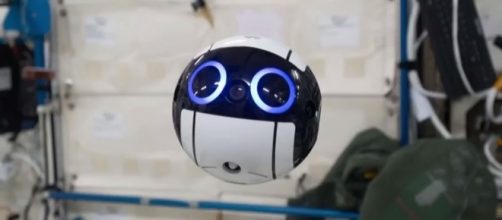Japan Aerospace Exploration Agency (JAXA) has finally unveiled some footages taken by its floating Camera Drone in its module in space. The new tool acts as the new staff of astronauts inside the International Space Station (ISS) to help in the documentation process.
What is this camera drone from Japan?
Japan currently has the JEM Internal Ball Camera named as "Int-Ball" hanging out in the outer space. The U.S. Dragon spacecraft has launched the Int-Ball on June 4 and delivered it to "Kibo," the Japanese Experiment Module on the International Space Station.
It is the first camera drone sent by the country to take photos and videos inside the experimental hub in the space.
The camera drone looks adorable with its luminous pair of blue eyes. The drone is shaped like a ball with a white body and a black accent in the middle.
The Int-Ball can be controlled from Earth through the JAXA Tsukuba Space Center. There are flight controllers and researchers who use a remote-control to navigate the ISS with the robot drone, who will then send back the footages to the onboard crew.
The camera moves inside the "Kibo" and records the activities of the astronauts inside the module. This technology advancement is amazing because the images and videos can be monitored in real time.
Meet the International Space Station’s adorable camera drone https://t.co/ZX6is5T0qh #cameras #drone #gear #intball pic.twitter.com/FH88vYrTLJ
— Kabiru Abdulhamid (@IamKabiru) July 17, 2017
What is the role of the Int-Ball in the International Space Station?
Inside the International Space Station, the astronauts perform experiments and documents each activity and its outcome. The Int-Ball helps in the documentation of the work and its progress.
According to the report of Japan Times, about 10 percent of the working hours of the astronauts inside the module covers for the preparation and doing the documentation of works. The camera drone will come in to do the significant role of recording videos, in lieu of the manual recording by the astronauts.
The Int-Ball has 12 propellers and a diameter of 15 cm. These aspects and its high-resolution camera will enable the drone to move in any direction to capture still and moving photos. Moreover, it can perform movements with accuracy because of its ultrasonic sensors, inertial sensors, and the image-based navigation camera.
In the report, it was also revealed that JAXA has future plans to upgrade the Int-Ball. The team envisions to improve the drone to be able to do more complicated tasks like checking the supplies on the ISS. Furthermore, the agency also aims, in the future, to use it to assist in diagnosing problems onboard the experiment module.


